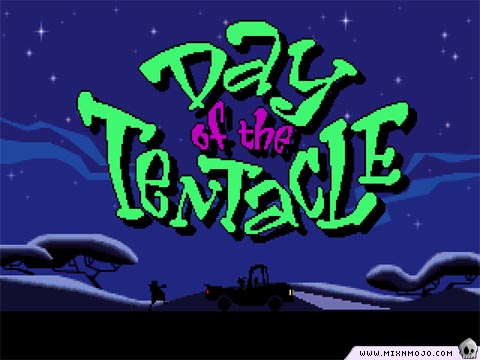Articles

Gary Winnick Interview Page Three
Maniac Mansion was a very bizarre, twisted, and outrageous game. I can only assume this was reflected by the personality of the people designing the game. Were you guys just as bizarre and twisted at the office? Did you goof off a lot while putting hamsters in the office microwave?

For us there was certainly a sense of fun, creativity and challenge, Ron and I were thrilled to be designing our own game. We definitely had a sense of the kind of story and humor we wanted. The overall genre of twisted comedy was something that really appealed to us. We were big consumers of that medium, books, films, television, music, games and toys. Ron and I wanted to develop a cast of characters and situations that could work together, the more bizarre and strange the better. The characters we developed embody many highly parodied personality traits of various people we knew. Some of the situations and related puzzles are very exaggerated twisted versions of events we either experienced or heard about from friends, or just plain made up (however no hamsters died in the making of this game).
What was it like working with Ron Gilbert, who is now considered by some to be a legend due to his Monkey Island games?
He's certainly one of the most talented programmer, designer, storytellers I've ever met. Ron's a perfectionist and helps instill that desire and attention to detail in everyone on the team. Ron likes to work and play hard, he's driven to make any project he's involved with the best it can be. On top of that we share the same 'twisted' sense of humor.
What did you think of Tim Schafer and Dave Grossman's sequel, Maniac Mansion 2: Day of the Tentacle?

I think they did a great job maintaining the integrity of the original characters, concept and feel, Ron and I were involved in many of the early brainstorming sessions. The advances in hardware on the PC gave us much greater latitude. On the art side we were able to have beautifully designed Peter Chan backgrounds and really cool animation by Larry, Anson and Lela (I hope I'm not leaving anyone out). Tim and Dave also had the bizarre sense of humor, creative and technical ability necessary to create a credible sequel that I'm certainly impressed by.
In 1992, you worked on Defenders of Dynatron City with Steve Purcell, who is very well known for his Sam and Max comics. What was it like working on this project with Steve?
Steve is someone I'm still in touch with, we've continued working together on a variety of projects. Steve is probably on of the most talented artists I've ever met, working with him was really fun. He could take any rough concept we came up with just an idea or rough sketch and transform it into an amazing finished drawing. On top of that he can write and not just story treatments but dialogue, witty, insane, hilarious dialogue. All you have to do is look at Sam and Max and you know what I mean.
Defenders of Dynatron City went on to become an animated TV series as well as a comic book. What was it like to see a project you worked on spread into other forms of media? Were you involved at all in its development?

In this case it was pretty cool because Lucasarts was the licenser to both DIC (the producer of the show) and to Marvel on the comic. As such, given the status of the company we pretty much retained creative control. Most people who take a story property to other mediums usually don't have the opportunity to exert that level of control over the product. Lucasarts was very supportive of my vision and I was allowed to pretty much direct our interactions with the studio. In the case of the comic book my involvement was even more hands on as I was good friends with and involved in getting Steve Purcell to agree to write the comic and Frank Cirocco to draw it. I also co-plotted some of the issues with Steve, Marvel pretty much gave us a free hand. Although both projects were short lived I was pretty happy with the outcome from a creative point of view. My main criticism of the pilot show was we never really got a good view of the monster at the end otherwise I was really happy with the cartoon. In addition to Steve it also gave me an opportunity to work with and get to know other very talented people in licensing and other areas of the company, Howard Roffman, Eric Stein, Cynthia Wuthmann and Vital Vayness to name a few.
Similarly, Maniac Mansion was also turned into a TV sitcom on the Family Channel, but the story and characters were very different from the game. What did you think about the TV show?

That experience was a bit different, Ron and I had very little interaction with its' development. At first we were involved with creation of the initial pitch materials for the show as an animated series, but it eventually developed into a live action pitch. The TV development group brought on Eugene Levy (of second city TV) as the producer, they re-developed the show into the sitcom that ended up airing on the Family Channel. It was pretty different from our vision, obviously we would have liked to have had more of a hand in the development of the show.